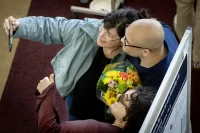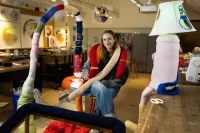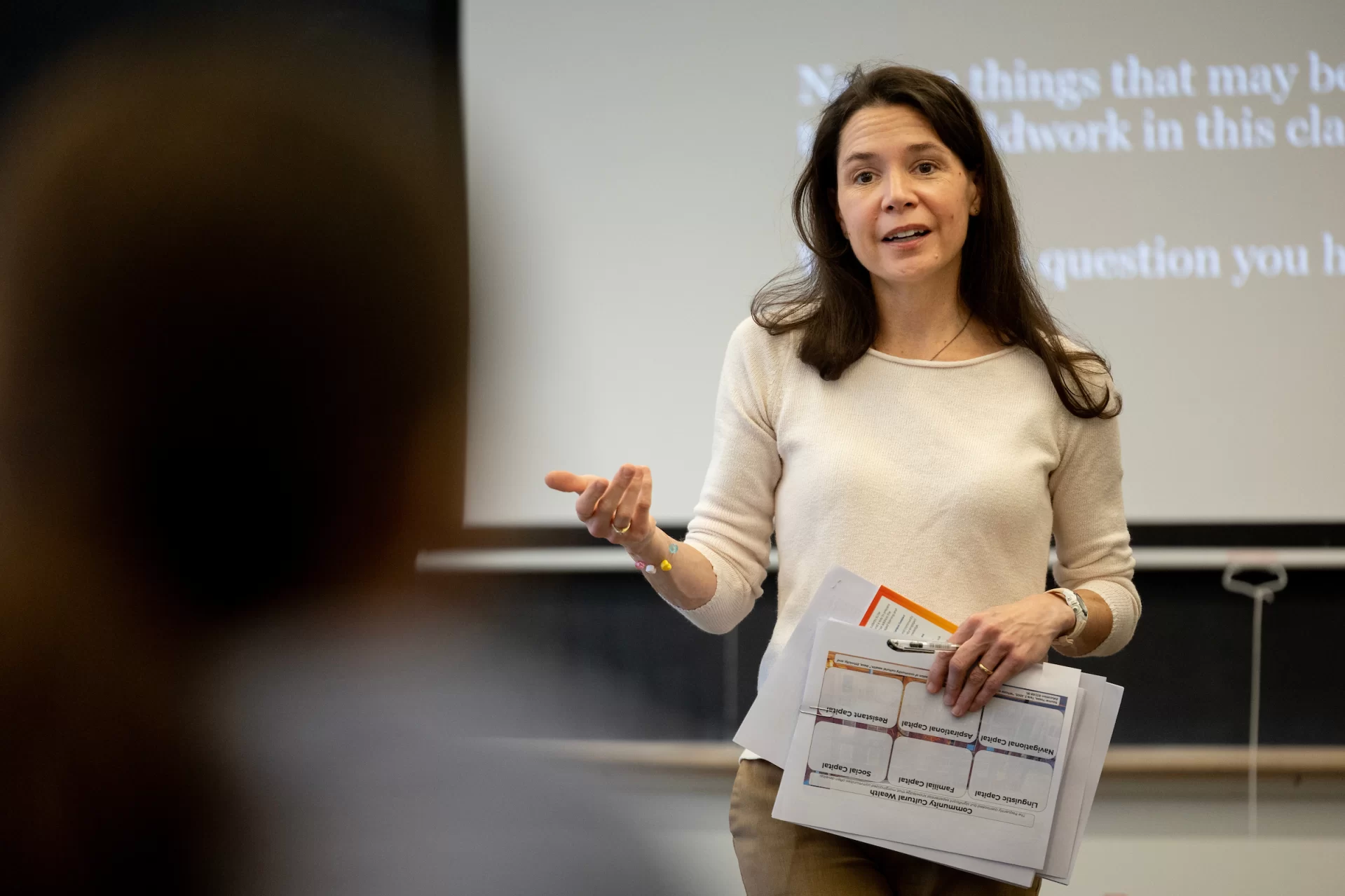
New $270,000 grant will make the student summer research experience even better
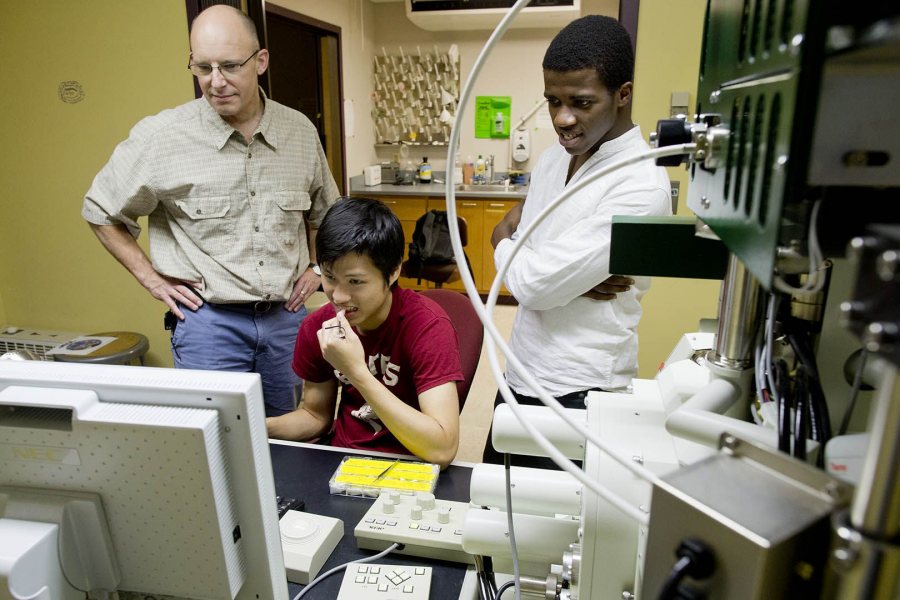
Bates summer student researchers Jia-Ahn Pan ’16 (seated) of Kuching, Malaysia, and Akachukwu Obi ’15 (right) of Nnewi, Nigeria, work with Associate Professor of Chemistry Matt Côté in August 2015. A recent grant from the Sherman Fairchild Foundation will support 15 new student researchers at Bates. (Phyllis Graber Jensen/Bates College)
A $270,000 grant to Bates from the Sherman Fairchild Foundation will create up to 15 new summer research opportunities for science students, announced Matt Auer, vice president for academic affairs and dean of the faculty.
The grant will also create the new Bates Summer Science Research Experience, an innovative program to give the college’s burgeoning community of student researchers an even more “structured and unifying” experience as they work closely with faculty mentors, Auer said.
Associate Professor of Physics Nathan Lundblad will direct the new program, and he gives micro and macro reasons that the grant hits a sweet spot for Bates.
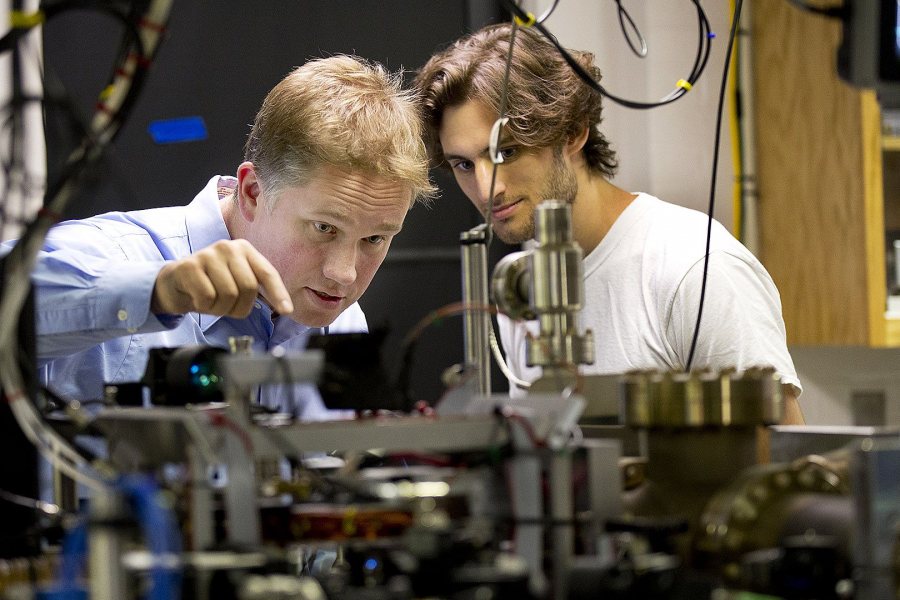
Associate Professor of Physics Nathan Lundblad will direct the new Summer Science Research Experience program. Here, in summer 2014, he works with student researcher Ben Lovitz ’15 of Portland, Ore., in Lundblad’s ultra-cold atomic physics lab. (Phyllis Graber Jensen/Bates College)
On an individual level, says Lundblad, the funding “gives Bates students the opportunity to take part in world-class scientific research within the context of a small college.”
For the summer cohort as a whole, the Summer Science Research Experience will create solidarity and community by offering professional development workshops, opportunities to make research presentations, and group outings.
The grant comes to Bates at a “pivotal juncture” in the college’s history.
“This program gives the students experience and a perspective on science that will not only extend their education as a major in that field but also help launch them into their work after Bates, whether it involves graduate study, private industry, or other work,” Lundblad says.
Even more broadly, the grant comes to Bates at a “pivotal juncture” in the college’s history, says Auer.
In the current decade, Bates anticipates the retirement of roughly a third of the faculty, many in science fields; in turn, their successors are now arriving on campus in “unprecedented numbers,” Auer said, all of whom will be eager for students to help continue their research programs.

The $270K foundation grant “says a lot about the institutional support” for student and faculty research at Bates, says physicist Aleks Diamond-Stanic, one of Bates’ newest professors.
Among the newest of the new faculty members is Aleks Diamond-Stanic, one of two young physicists who have accepted Bates’ offer to join the faculty in the fall.
As a Grainger Postdoctoral Fellow in the Department of Astronomy at the University of Wisconsin–Madison, Diamond-Stanic studies the “co-evolution of galaxies and their supermassive black holes.”
Hearing news of the grant, Diamond-Stanic says that the new funding “says a lot about the institutional support at Bates for engaging students in cutting-edge research.”
Professionally, he adds that it is “exciting for me to have the opportunity to advance my research program through projects that involve Bates students.
“They’ll have the chance to solve problems and explore data-driven solutions to outstanding scientific questions, and they will be able to do so in an environment that is supportive of their growth and success.”
At Bates, summer research offers a quasi-semester experience for both faculty and students.
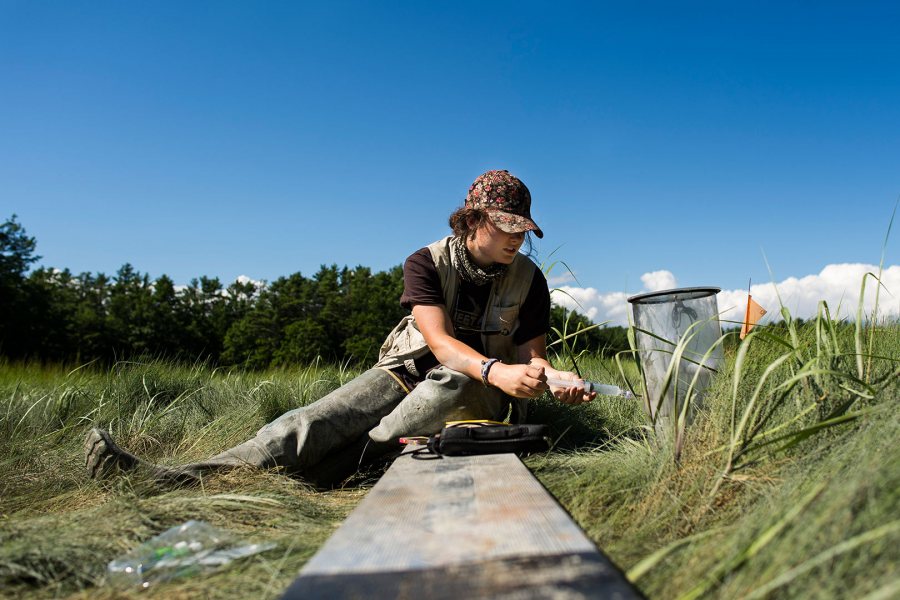
A summer researcher with Professor of Geology Beverly Johnson, Cailene Gunn ’16 of Granby, Conn., collects gas samples in a coastal Maine marsh. She’s supporting ongoing research to analyze the health of various marshes that have been altered by humans. (Josh Kuckens/Bates College)
Of the approximately 50 faculty in science disciplines at Bates, 75 percent mentor at least one summer student researcher.
On the student side, 78 did summer research in 2015 funded either by the college or by a professor’s own research grant. Sixty were STEM students — most working on campus with Bates faculty and others in prominent research labs around the world, such as a quantum physics lab at the Institute of Physics at the University of Heidelberg or the Brain and Mind Research Institute at Cornell Medical College.
The impact of faculty-mentored scholarly work is great, Auer said, noting that Bates is in the top 30 liberal arts colleges in the proportion of its graduates who go on to earn doctorates in the sciences, success due in large part to the “high-quality science mentorship” they receive during summer research.
In addition, student research often appears in peer-reviewed articles in top-tier journals, such as the Journal of Organic Chemistry, the Journal of Inorganic Biochemistry, and the Journal of Applied Physiology.
In fact, Bates science faculty and 56 of their students or young-alumni mentees have authored 35 peer-reviewed articles over the last three years.
